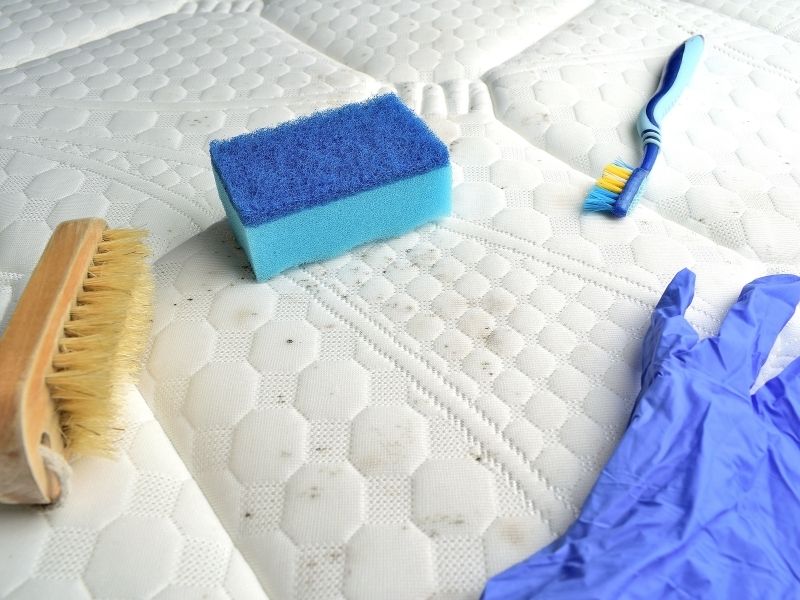No matter how clean your home looks on the outside, there might be invisible mold spores lurking. In many cases, the onset of mold is beyond your control. Of course, it’s frustrating when mold shows up in your home. This is why it’s important to know the cause of mold in homes and what you can do about it.
When molds are small and controllable, typically, those shouldn’t be a cause of concern since you can easily clean them. They only become problematic when the smaller molds become colonies of dark and slimy mold. That’s when things get messy. Not only is this unsanitary for a household to have, but it may also bring about serious health issues for the whole household.
However, there’s no reason to panic if it is already out of control. In fact, there are expert mold removal companies to help you. If your home has had a problem with mold, continue reading to learn about its top causes and what you can do about it.
Your Guide to the 4 Top Causes of Mold in Homes

1. Persistent humidity.
Mold problems are common in households located in places where the humidity is consistently high. This is natural, given the air’s high moisture content. For houses with persistent humidity, molds usually start to grow under the kitchen sink, on the walls, and in ceilings.
This problem with humidity is also common in homes near bodies of water, which is made worse by poor ventilation in a household. If you know you live in a home where humidity and ventilation are main concerns, here’s what you can do about it:
- Lower the heat by using radiator heat sources.
- Boil water on the stove when you’re at home, as the boiling water contributes moisture to the air.
- Leave the bathroom door open while you’re showering to let steam escape and fill the other nearby rooms.
- Add some houseplants to your home, as those can purify your air and add to the humidity level.
2. Mold spores.
Mold spores are one of the top causes of molds in homes. These are quite hard to prevent, as they can be prolific and invisible to the naked eye. These penetrate your home from the outside and are spread across your entire home through air movement.
The thing with mold spores, however, is that they can be very hard to prevent. The most you can do is to keep the spread of molds under control. These are some of the best control measures you can practice at home:
- Use hydrogen peroxide by pouring a 3% concentration on a spray bottle and then applying the mixture to the moldy surface while leaving the hydrogen peroxide to penetrate for 10 minutes. Scrub, and then wipe dry.
- Use baking soda by adding ¼ tablespoon of baking soda to water and then spraying the moldy area with the mixture and using a cloth or brush to remove the molds from the surface.
- Use lemons, as these are natural stain removers, deodorizers, and antiseptic. The high acid content in lemons breaks down the mold, giving you a disinfected surface.
3. Leaking pipes.
Perhaps you may not be aware of it, but you could have leaking pipes, which is also the cause of the problem. Or that you thought the leaking pipes are affecting your water supply and nothing more. But this notion is wrong. Leaking pipes can contribute to ceiling and wall mold, especially when the leaks are coming from your roof’s piping.
With leaking pipes, however, this is a serious plumbing concern that is only best left to the hands of the experts. Otherwise, if you try to do a DIY, you may only make the problem even worse. Leaking pipes can be a costly problem if it escalates simply because you made the problem even bigger.
4. High moisture levels.
If your home has high moisture levels, then this is another culprit as well. Water is the source of all life, and the same principle holds true with molds as well. It needs moisture to thrive, so if your home has high moisture levels, you give the molds the perfect opportunity to grow. Most molds start in hidden places in your home, and the longer the wet conditions exist, the higher the likelihood for molds to now have their nursery to flourish.
There’s no fancy solution to this, except to dry your sink and bathroom walls after every use. Once black patches start to form on grout lines, that’s a telling sign mold is starting to grow.
In conclusion.
Mold is a part of the environment where oxygen thrives and it will always be around. But, once you know its top causes in your home, you can avoid its onset so as to minimize its growth in your home.
Apart from tackling the problem on your own, you may also want to call in the experts for this purpose. By doing so, you can be sure that there is complete mold removal, keeping your home clean and healthy for your family. If you have any questions or suggestions, we always love to hear from you in the comments below. Also below are links to more interesting and informative articles about ALL things DESIGN for your home or business.
Images Courtesy of Canva.
Other Posts You Might Enjoy:
13 Signs Your Bathroom Needs A Remodel
5 Ways To Improve The Air Quality In Your Home
4 Ways To Prepare Your Roof For The Summer Months
6 Health Risks of Mold in Your Home with Bonus Removal Steps





